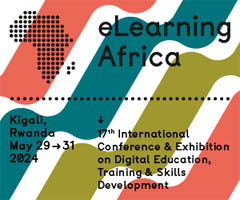"A Change in the Minds"
 Frankfurt, December 2015 - Over the years, further technical training for the approximately 700 employees of the fund-services company Union Investment has predominantly been offered as face-to-face events. At the beginning of 2015, however, a decision was made and implemented to increase the use eLearning. This approach was completely new to many participants, and they had to be convinced of its usefulness. At LEARNTEC 2016, Ingo Schneider, Group Leader Business Performance in the Segment Control and Development of Fund Services Department, will report on the initial situation, the challenges, and the experience gathered during this change project.
Frankfurt, December 2015 - Over the years, further technical training for the approximately 700 employees of the fund-services company Union Investment has predominantly been offered as face-to-face events. At the beginning of 2015, however, a decision was made and implemented to increase the use eLearning. This approach was completely new to many participants, and they had to be convinced of its usefulness. At LEARNTEC 2016, Ingo Schneider, Group Leader Business Performance in the Segment Control and Development of Fund Services Department, will report on the initial situation, the challenges, and the experience gathered during this change project.
To whom is your lecture on "digital learning culture" of particular interest?
Ingo Schneider: The topic is interesting for many companies because all are facing the same challenge: How do I run my company and lead my staff in the digital age? Digitalization represents one of the biggest changes in the working world in a long time, and hence it is important to adopt and implement it in all areas - including training. Because the change affects so many processes, companies can learn from each other, especially if what we have already started still lies ahead for them.
What do you mean by a "digital learning culture"?
Ingo Schneider: Digital learning not only means that subjects which were previously offered in traditional face-to-face courses are now simply computerized. Of course, the actual training process and its organization have been changed by my staff, for example through the use of the learning-management system (LMS) Moodle. Above all, however, a change has taken place in the method of learning: In the context of our blended-learning approach, classical training is complemented by self-learning phases that provide greater flexibility and require a different form of motivation. For many employees, the higher level of ownership of their own education and the new technical requirements are something completely new. None of this existed previously, and this has to be taken into appropriate consideration.
Why is it important for organizations to address the issue of digital learning culture?
Ingo Schneider: A central question for companies’ sustainability is whether they can come to grips with this issue. The decisive factor is not how much time employees spend in training at the computer, but whether there is a change in the minds of all company stakeholders. Digitalization is accompanied by new tasks and requirements profiles for employees. This includes flexibility - the current generation flowing into the labor market is already accustomed to a very different use of digital media.
In your practical experience, what are the stumbling blocks and obstacles to the installation of a digital learning culture in an organization?
Ingo Schneider: Two of the major challenges have certainly been taking into account the needs and interests of various parties and implementing the changeover during operation. This has not only affected the colleagues taking part in training and who possibly have a skeptical view of blended learning. Even my own staff, who organize the training, are affected, as are executives, some of whom need to be convinced of the advantages of their employees being granted more flexible time requirements. Likewise, our internal training team, which carries out the training for us, of course, has to be won, including the idea that it will not be made redundant by an LMS, but rather more important.
What basic requirements must be met so a digital learning culture can develop?
Ingo Schneider: The most important element is the willingness to engage in change and to view the innovation as an opportunity. If this happens, the rest is only a matter of time.









